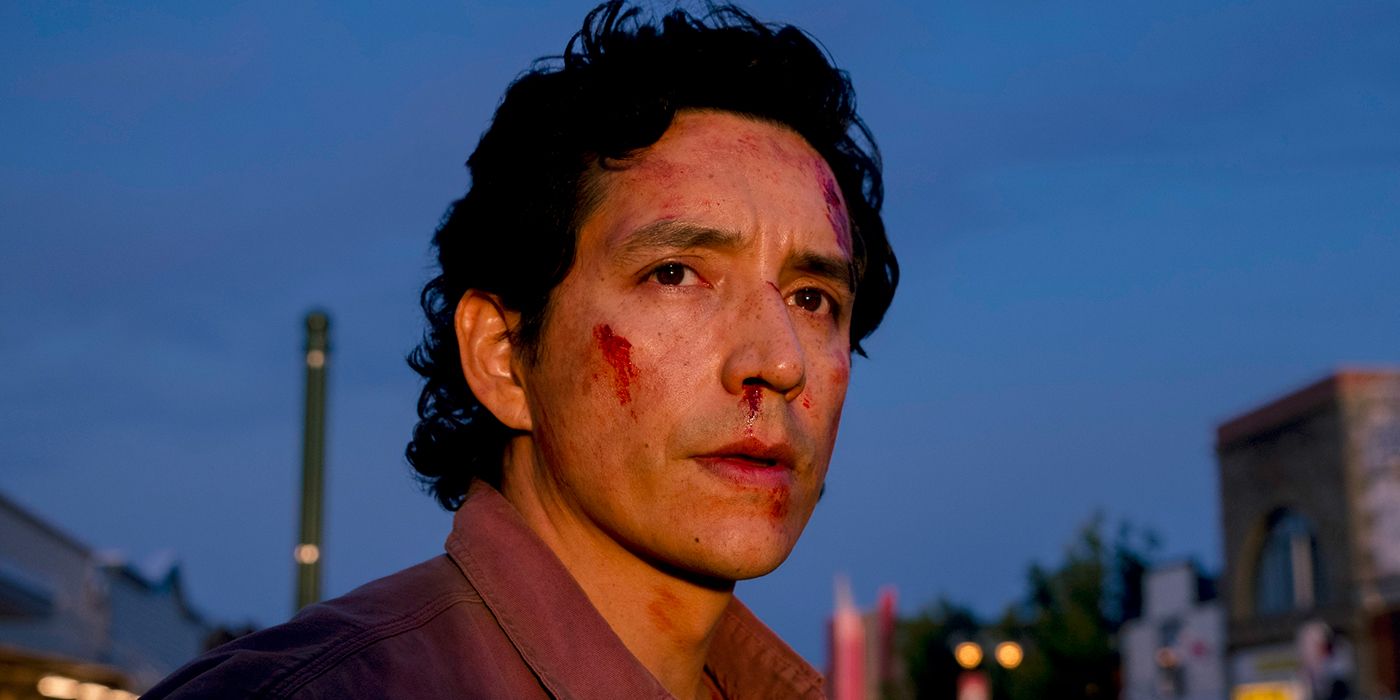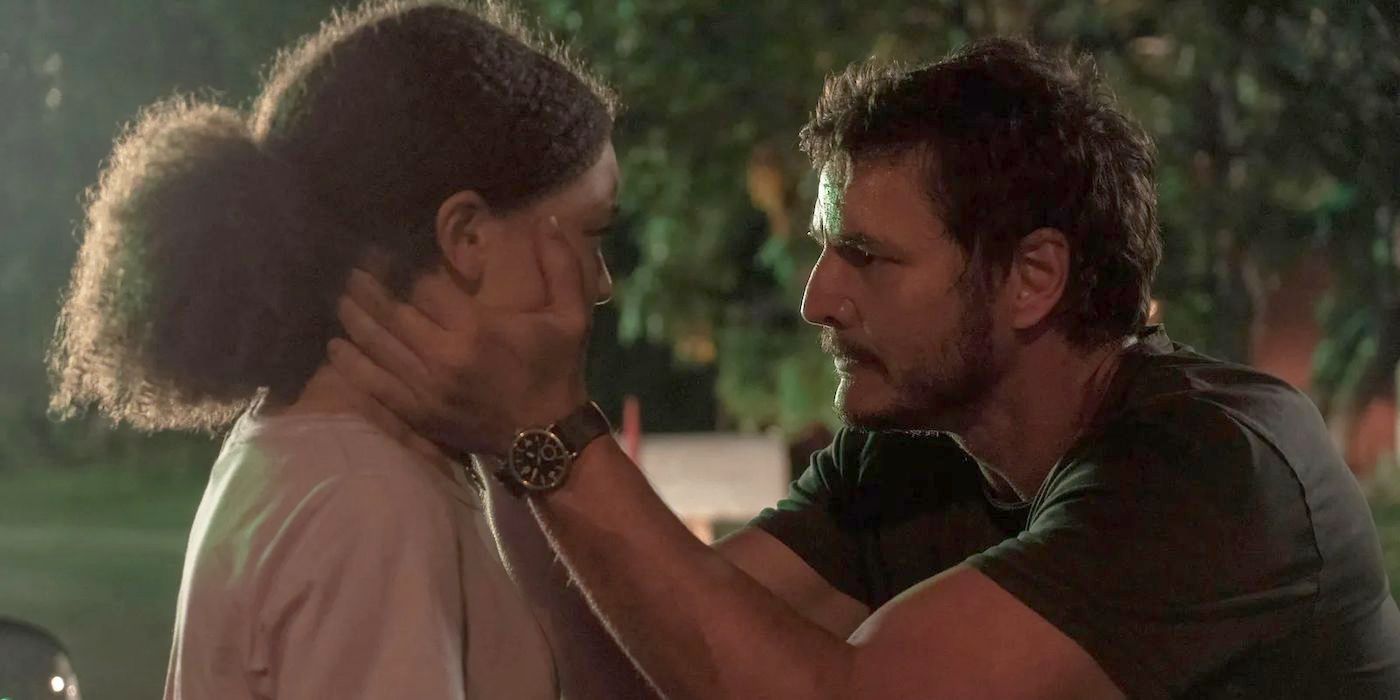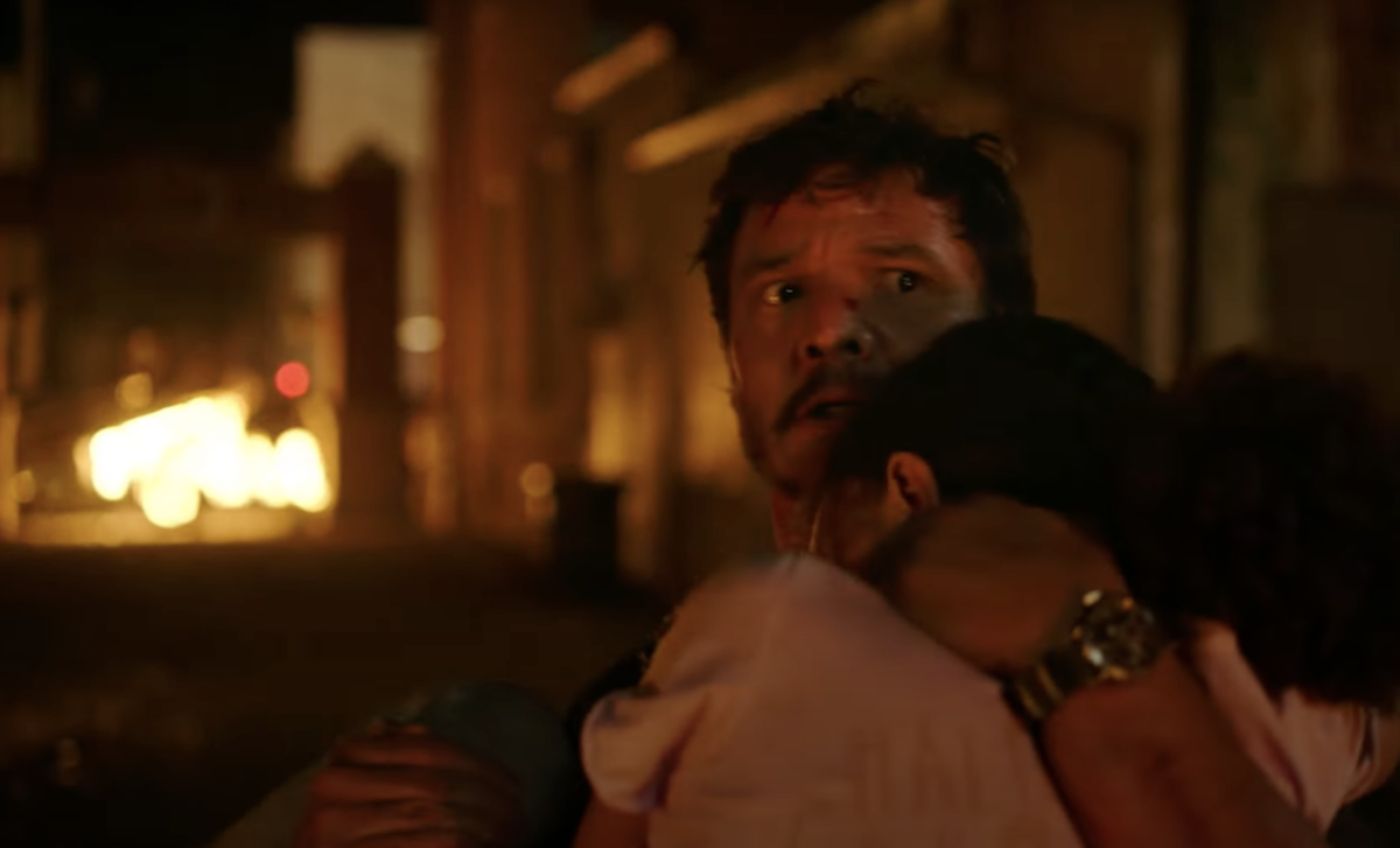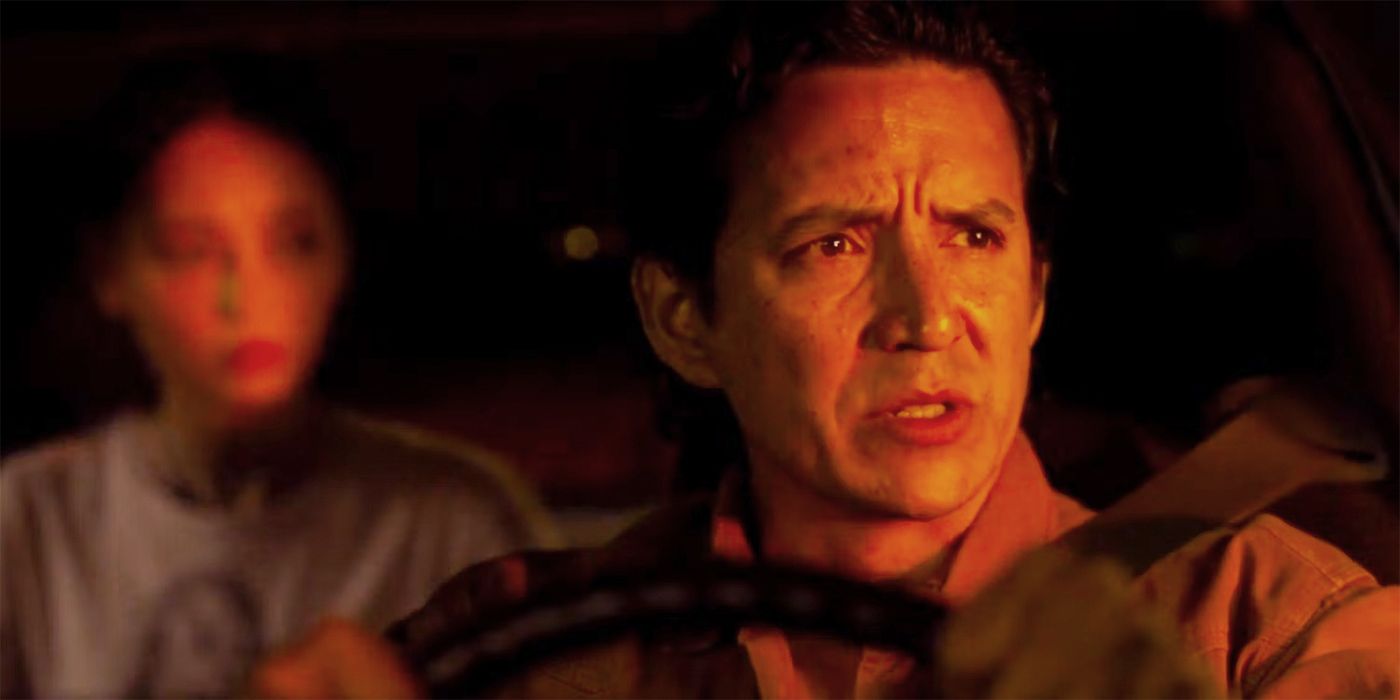Editor's Note: The following contains spoilers for Episode 1 of The Last of Us, and spoilers for the plot of The Last of Us Part I video game.One of the most thrilling and memorable sequences in The Last of Us video game's prologue is the getaway drive during the initial outbreak of the cordyceps fungus. Craig Mazin's HBO adaptation of The Last of Us captures this terrifying drive perfectly and also manages to amplify it to a devastating degree. Fans of the game will be happy to see that key details from the fateful drive are captured and recreated in the show, and newcomers to The Last of Us will likely be on the edge of their seats as the show's protagonists make their way through chaotic streets packed with screaming people, burning buildings, and vehicular carnage.
As with many aspects of The Last of Us TV series, the getaway sequence expands upon the foundation laid out by the game, adding texture and visceral drama to what was already a thrill ride experience.
The Infected Neighbors
In both the game and the first episode of The Last of Us HBO series, Joel Miller (Pedro Pascal), his brother Tommy (Gabriel Luna), and his daughter Sarah (Nico Parker) attempt to use Joel's truck to flee the suburbs outside of Austin, TX as a pandemic causes mass panic, chaos, and carnage around them. Craig Mazin's adaptation of the getaway sequence heightens the tension and stress considerably, plunging the characters into an immediately frantic, bloody, and tumultuous situation. The game's version of the driving sequence begins eerily and quietly in comparison, with Joel and Tommy loading Sarah into the car and driving off amidst darkened, empty streets.
This is not the case in the HBO version. Before the family has even started their getaway, the infected zombie-like Nana Adler attacks them on the front lawn, writhing and twitching like a demon. Joel kills her by bashing her head with a wrench, then turns to see that Sarah has been traumatized. Joel takes her by the shoulders and informs her that, "It's not just the Adlers," suggesting that whatever's happening is widespread. Joel tries to reassure his daughter that they will get her to safety, but as he is speaking a transformer on a power line behind them explodes, shooting sparks into the street. They take this as their cue to get back in the truck with Tommy and leave the neighborhood.
One of the Miller family's other neighbors, Denise, calls out to Joel as they get into the truck. Joel tells her to get back inside and lock their doors. Tommy swings the car around the cul-de-sac only to find Mr. and Mrs. Adler, now infected and shambling toward the car. Tommy speeds past them, clipping Mr. Adler with the car. Denise rushes over to check on the collapsed Mr. Adler, and through the rear window, Sarah watches as Mrs. Adler attacks Denise while their truck speeds away. Mazin's Last of Us makes a hearty meal out of the game's relatively brief prologue sequence, and this scene in particular turns a blip of eeriness into an immediately violent and hectic situation. This is one of the many ways in which Mazin and company take what the game laid out and amplify it, raising the tension while doing the game justice.
In a shot taken directly from the game, Tommy and Joel discuss taking route 71 to get to safety. As they approach a few road signs at an intersection, a few cop cars go speeding by their vehicle. Just like in the game, the radio is no longer picking up signals, but unlike the game, things are a bit less certain and the characters seem more frazzled. Joel informs Sarah that they are not certain why or how this is happening, and that uncertainty only adds to her fear. Tommy suggests that it's some sort of viral outbreak or parasite, but Joel reiterates that they don't know for certain yet. In the game this moment was something of an exposition dump, allowing Tommy to inform the player that this outbreak is happening nationwide, providing key information that this isn't some localized event. Viewers are not provided that level of certainty in the show, and that only adds to the suspense. Sarah is concerned that they could be sick as well, and Joel struggles to convince her that they are fine. Tommy informs her that it is mostly people in the city that have become infected.
The Last of Us Show Replays Iconic Moments From the Game
The discussion of the illness stops momentarily as viewers get to witness another iconic shot from the game: a solitary farmhouse engulfed in flames. In the game, it was referred to as Louis's farmhouse, but here it's said to be Jimmy's place. Regardless of the name change, the burning building is a haunting sight in the darkness. After a moment of consideration, Sarah recalls that their neighbors, the Adlers, would take Nana into the city so that she could go to the hospital. Joel concurs and suggests that this is probably why they got infected, implying that the Millers are likely safe, as they have not spent much time in the city. Sarah sounds less than convinced, wondering aloud how much time someone would have to spend in the city to be infected.
Just like in the game, Tommy wants to stop and help some stranded pedestrians, but Joel tells him to keep driving. In both versions, he says, "Somebody else'll come along," which seems to be meant to reassure himself as much as his daughter. As the Millers head toward the highway, they're nearly sideswiped by passing cars heading in the opposite direction. They're met with a massive traffic jam that's blocking their main escape route. This is where things take a detour from the events of the game, with Tommy driving the truck across an open field to try to circumvent the jam. This plan immediately fails, as they come across a military convoy blocking the highway, replete with helicopters, tanks, and more. Joel urges Tommy to drive south, the only direction without a clear obstacle, and he begins to plot aloud that they might be able to cross the border and find safety in Mexico. This prompts Sarah to suggest that there might not be anywhere safe, and that the infections could be happening everywhere. Though Tommy provided that information concretely in the game, it's delivered as a possibility here rather than a definite thing. It also happens at the perfect moment to gut the viewer. At every turn, our heroes are met with a reminder that there may be no escape from this hell. Mazin's knack for heightening the uncertainty of the situation and peppering each moment with disorienting, chaotic violence makes this sequence all the more harrowing.
Sarah covers her ears as a trio of deafening 747s roar overhead, at least one of them with its landing gear down and no clear runway in sight. The Millers have no time to contemplate this bizarre sight as they come across another roadblock and some fleeing pedestrians. They narrowly avoid getting T-boned by another car, a direct reference to how this getaway sequence ends in the video game, but continue onward until Tommy's route is blocked by another crowd of frightened pedestrians. Joel urges him to keep driving, but Tommy does not want to hit anybody. A swarm of infected and panicked people burst through the window of a nearby movie theater (one whose marquee reads "Midnight Madness" in a bit of dark comedy). Joel tells Tommy to send the car back the way they came, but while Tommy struggles to do so without killing anybody, Sarah spots the haunting sight that will bring their drive to an end.
The Last of Us Series Also Includes New Standout Scenes Like the Airplane Crash
In the sky behind their truck, there is a 747 tilted at an unnatural angle, jackknifing through the air. The image is so striking and upsetting that it will no doubt stick in viewers' minds as one of the best and most terrifying new additions in this adaptation. Joel, Tommy, and Sarah are pincered between a swarm of screaming pedestrians, many of whom are transforming into infected creatures, and an out-of-control plane that is tumbling toward them. Within seconds, the plane nosedives and explodes, sending a massive fireball into the air and shooting wreckage everywhere. A tire flies from the blast and collides with their truck, resulting in an accident that flips the vehicle and causes Sarah to black out. This ends the truck's getaway drive, as Joel must carry the injured Sarah on foot from here. Joel heroically vies to keep Sarah safe at all costs, but this journey will only end in tragedy.
What makes The Last of Us an interesting and unique adaptation is that its source material was strong enough to not need much expansion or embellishment, and yet Mazin and Neil Druckman, writer of both the show and the original game, sought to build out what was implied by the video game rather than just present things in a 1:1 manner. This car sequence follows the trajectory of its analog in the video game but adds in so many little moments of terror that accrue into something altogether more terrifying. From the infected neighbors to the jaw-dropping plane crash at the end, the HBO version of the getaway drive is a standout sequence in what is shaping up to be the best video game adaptation of all time.




